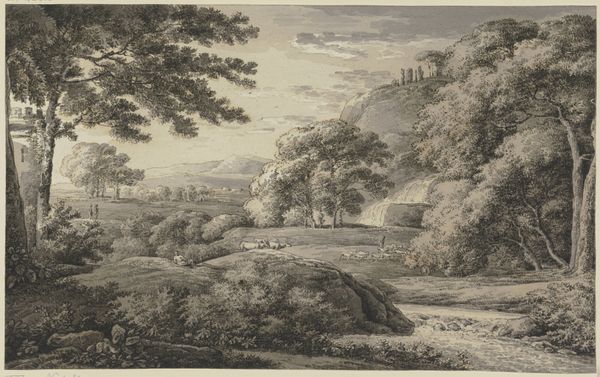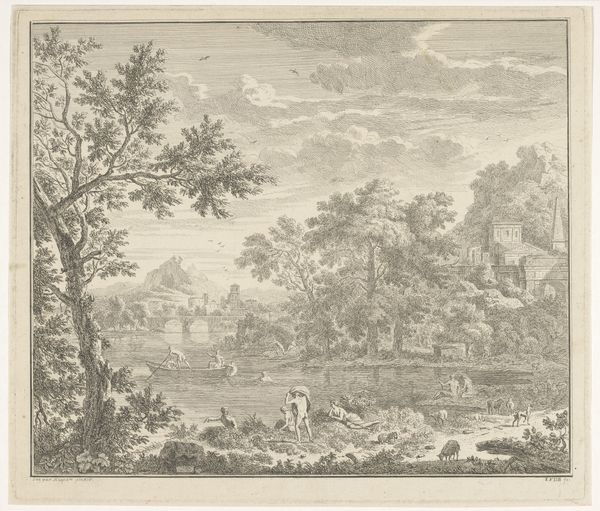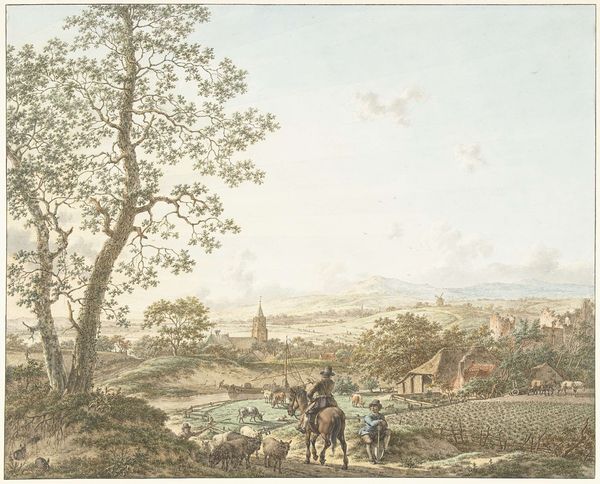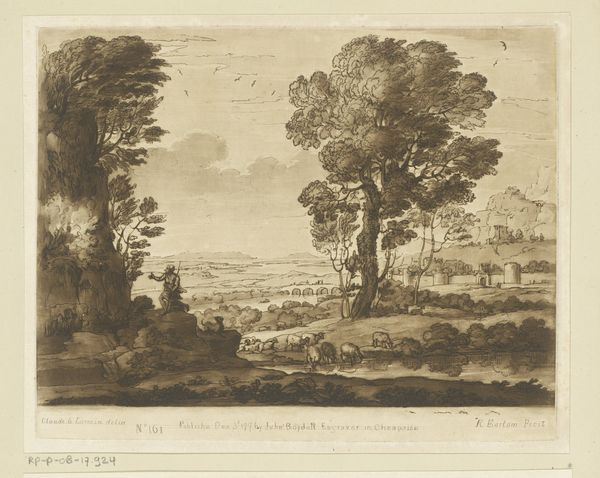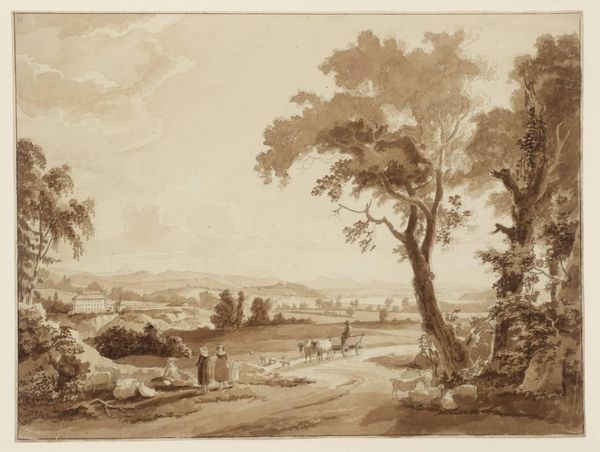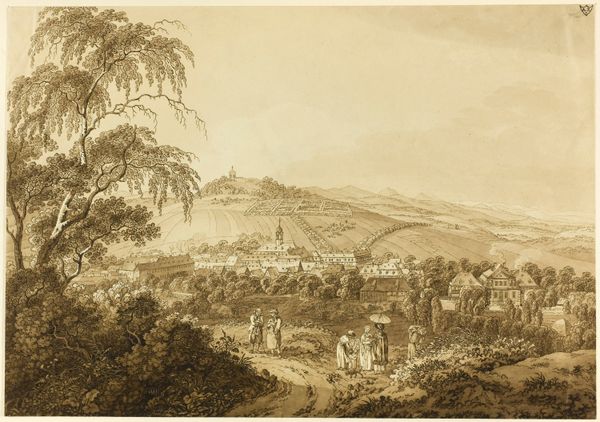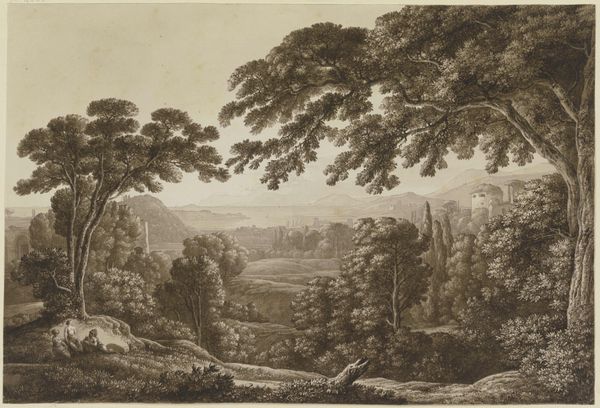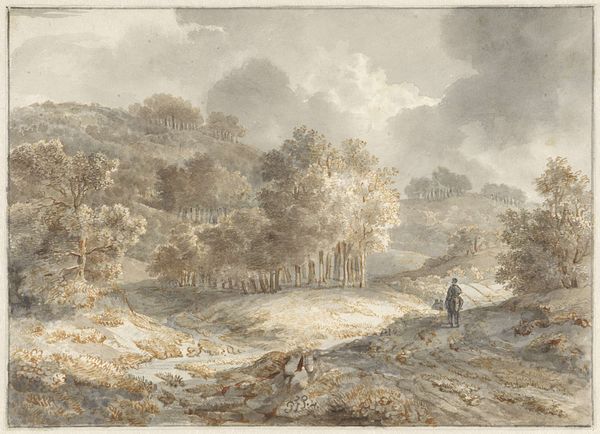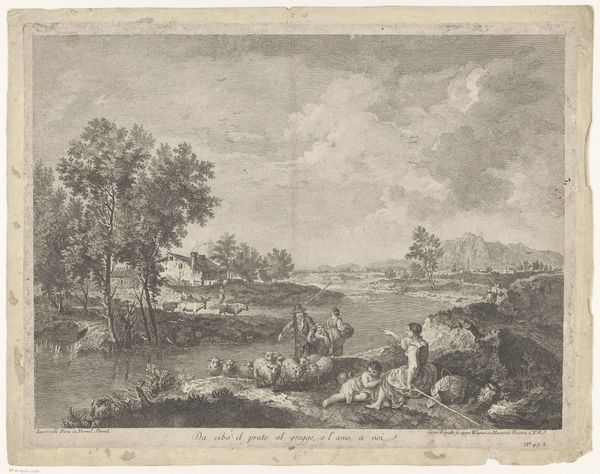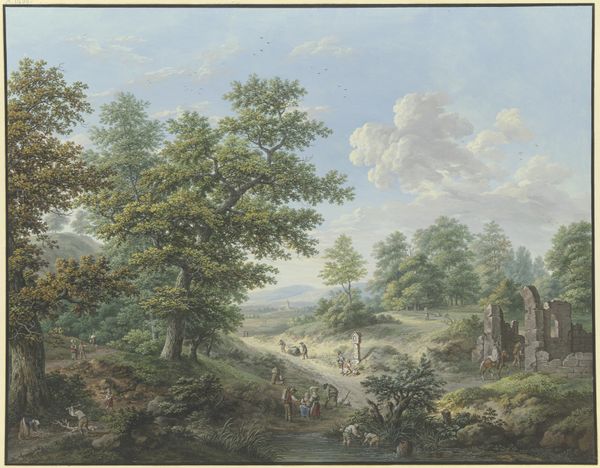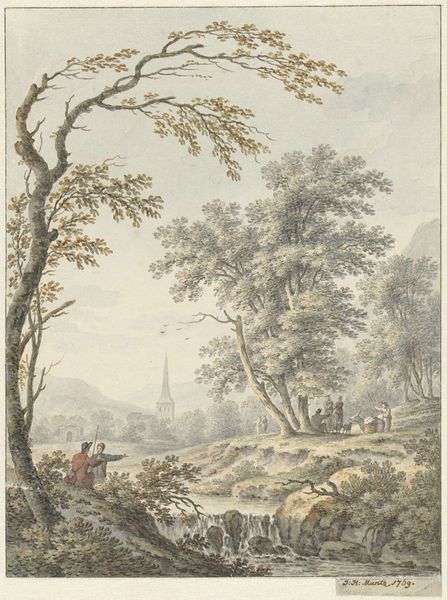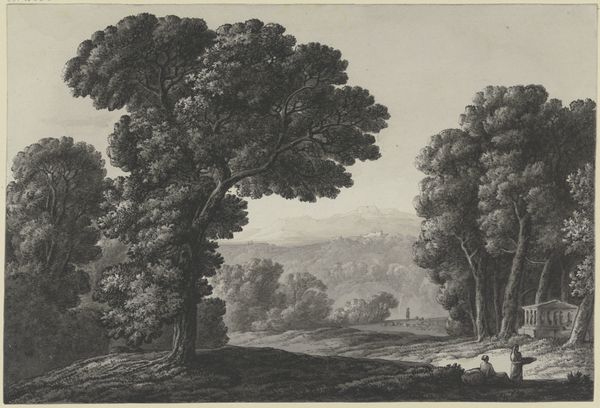
drawing, print, intaglio, paper, engraving
#
drawing
# print
#
intaglio
#
landscape
#
paper
#
water
#
cityscape
#
engraving
Dimensions: 250 × 345 mm
Copyright: Public Domain
Editor: We’re looking at "View of Village and Distant Hills," an undated engraving and intaglio print by Johan van der Hagen. It gives me a very serene feeling, almost like observing a peaceful miniature world. How do you interpret this work? Curator: This cityscape transcends mere topographical depiction, doesn't it? For me, the work serves as a poignant commentary on the social hierarchies embedded within the 17th and 18th-century Dutch landscape tradition. Consider the positioning of the figures – are they merely aesthetic elements, or do they symbolize the power dynamics between the landed gentry and the rural populace? The very act of "viewing" implies a privileged perspective. Editor: That's interesting! I was focused on the overall harmony, the way the artist balanced nature and the built environment. I hadn't considered the power dynamics. Curator: Indeed. Notice how the towering trees in the foreground frame the village, creating a sense of distance and perhaps even detachment. Landscape isn’t neutral; it’s actively shaped by and reflective of existing societal structures. What does the presence of the church steeple signal? Whose stories are privileged in this narrative, and whose are marginalized? Editor: I see what you mean. The steeple is definitely a central visual element. Maybe it represents the dominance of religious institutions within the social fabric. Do you think that was van der Hagen’s intent? Curator: Intent is a tricky thing to pinpoint across centuries, but we can examine how the imagery aligns with the broader sociopolitical context of the Dutch Republic and ask, what purpose this idealized vision serves, and whom it serves. These carefully constructed landscapes legitimized specific forms of land ownership and social order. Editor: This has completely changed how I see landscapes. I never considered that they could reflect something more than just a pretty scene. Curator: Exactly. By questioning the supposed neutrality of landscapes, we uncover deeper meanings about social history and the cultural values of a particular time. It pushes us to reconsider our own present-day assumptions about landscapes.
Comments
No comments
Be the first to comment and join the conversation on the ultimate creative platform.
